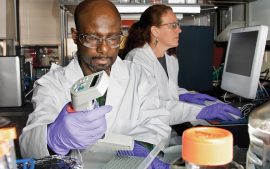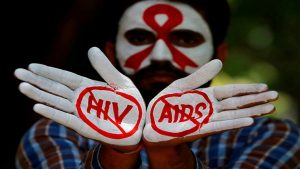A new report from UNAIDS shows that intensified HIV testing and treatment efforts are reaching more people living with HIV. In 2017, three quarters of people living with HIV (75%) knew their HIV status, compared to just two thirds (67%) in 2015, and 21.7 million people living with HIV (59%) had access to antiretroviral therapy, up from 17.2 million in 2015.
The report shows, however, that 9.4 million people living with HIV do not know they are living with the virus and urgently need to be linked to HIV testing and treatment services.
The report, Knowledge is power, reveals that although the number of people living with HIV who are virally suppressed has risen by around 10 percentage points in the past three years, reaching 47% in 2017, 19.4 million people living with HIV still do not have a suppressed viral load.
To remain healthy and to prevent transmission, the virus needs to be suppressed to undetectable or very low levels through sustained antiretroviral therapy. And to effectively monitor viral load, people living with HIV need access to viral load testing every 12 months.
“Viral load testing is the gold standard in HIV treatment monitoring,” said Michel Sidibé, Executive Director of UNAIDS. “It shows that treatment is working, keeping people alive and well and keeping the virus firmly under control.”
The report outlines that access to viral load testing is mixed. In some parts of the world, getting a viral load test is easy and is fully integrated into a person’s HIV treatment regime, but in other places there may be only one viral load machine for the entire country. UNAIDS
World AIDS Day 2018 message by UNAIDS Executive Director, Michel Sidibé
“Viral load monitoring needs to be as available in Lilongwe as it is in London,” said Mr Sidibé. “HIV testing and viral load testing should be equal and accessible to all people living with HIV, without exception.”
In Côte d’Ivoire, the United States President’s Emergency Plan for AIDS Relief is supporting a national scale-up plan for viral load testing. In just three years, as the number of people on treatment doubled, 10 additional laboratories began viral load testing. Subsequently, viral load testing coverage increased from 14% in 2015 to 66% in 2017 and is projected to reach 75% by the end of 2018.
“This year’s UNAIDS theme for World AIDS Day (Live life positively—know your HIV status) reiterates the fact that HIV testing remains the only way to know your status and to adopt a healthy life plan,” said Eugène Aka Aouele, Minister of Health and Public Hygiene, Côte d’Ivoire.
Children and HIV and viral load testing
Viral load testing is particularly important for newborns, as HIV progresses much faster in children—peak mortality for children born with HIV is within two or three months of life. Standard rapid diagnostic testing is ineffective up until 18 months of age, so the only viable test for HIV for very young children is a virological test, which they need to receive within the first four to six weeks of life. However, in 2017, only half (52%) of children exposed to HIV in high-burden countries received a test within the first two months of life.
Important advances are being made. New point-of-care testing technologies—testing that takes place in an environment as close to the person as possible—have been shown to shorten the time it takes to return children’s test results from months to minutes, which is saving lives.






